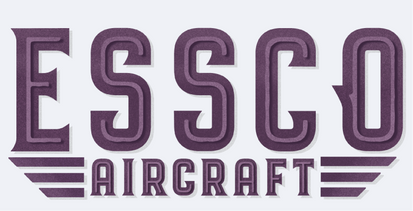
The Hughes H-4 Hercules: A Colossal Vision That Never Took Flight
Few aircraft in aviation history have captured the public’s imagination quite like the Hughes H-4 Hercules—better known by its famous nickname: the ‘Spruce Goose’. This massive flying boat was imagined during World War II as solution to a deadly problem, but it arrived too late to fulfill its mission. Despite only flying once for 26 seconds, the H-4 remains one of the most legendary aircraft ever built, a testament to innovation, ambition, and the limits of aviation engineering in its time.
The Problem: The Need for Safe Transatlantic Transport
During World War II, Allied forces faced a major challenge: safely transporting troops, vehicles, and supplies across the Atlantic while avoiding German U-boats. The relentless submarine warfare was devastating Allied shipping, sinking thousands of tons of cargo and endangering the war effort.
Industrialist Henry J. Kaiser, a pioneer in shipbuilding, proposed an alternative—a fleet of massive cargo aircraft capable of flying over the Atlantic and bypassing the deadly waters below. However, the U.S. government’s priority was on building conventional aircraft for combat, and aluminum was reserved for fighters and bombers. Any new design would need to be constructed using non-strategic materials, leading to the choice of wood as the primary building material.
To bring his concept to life, Kaiser partnered with Howard Hughes, the maverick aviator, engineer, and businessman known for pushing the boundaries of aviation technology. The result would be the largest flying boat in history.

Photo Credit: alchetron.com
The Design: A Wooden Giant Takes Shape
The Hughes H-4 Hercules was unlike anything the world had ever seen. With an unprecedented wingspan of 320 feet—longer than a football field—it remains to this day the largest wingspan of any aircraft ever built.
Designed to carry massive payloads over vast distances, the Hercules was planned to transport up to:
- 750 fully equipped troops, or
- Two 30-ton Sherman tanks, or
- Designed to carry 150,000 pounds (68,000 kg)
The aircraft’s frame was primarily constructed from birch plywood, using a technique called Duramold, which involved layers of thin wood bonded with resin to create a lightweight yet sturdy structure. Despite its nickname, the 'Spruce Goose,' the aircraft wasn't actually built with it.
Powering this giant were eight Pratt & Whitney R-4360 Wasp Major radial engines, each producing 3,000 horsepower, making it one of the most powerful aircraft of its time. The Hercules was designed for long-range flights at a cruising speed of 250 mph (400 km/h), making it a viable alternative to sea transport—at least in theory.
Challenges and Delays: Why It Never Reached Production
While the vision behind the H-4 was compelling, the reality of building such a massive aircraft from wood proved to be an engineering nightmare. The sheer complexity of its construction, combined with Hughes’ perfectionist tendencies, led to delays and cost overruns.
Originally slated for delivery in 1944, the Hercules was still unfinished by the end of the war in 1945. With Germany defeated and Japan on the verge of surrender, the need for a large flying boat diminished significantly. The U.S. military, which had been funding part of the project, canceled further development.
Howard Hughes, however, refused to abandon his dream. Under mounting political and public pressure—especially from government officials questioning the $23 million in taxpayer money spent on the project—Hughes insisted that the Hercules was a viable aircraft and promised to prove its airworthiness.

Photo Credit: aerocorner.com
The One and Only Flight: A Historic 26 Seconds
On November 2, 1947, Hughes personally piloted the H-4 Hercules in California. With a small crew onboard and thousands of spectators watching, the aircraft accelerated across the water.
Then, for a brief and breathtaking moment, the giant lifted off.
Flying just 70 feet above the water, the Hercules stayed airborne for 26 seconds and covered approximately one mile before Hughes gently brought it back down. The flight proved that the aircraft was indeed capable of flying, but it was too little, too late.
Despite Hughes’ insistence that the aircraft was operational and could be further developed, the military and government had no interest in pursuing it. No further flights were conducted, and the H-4 was never mass-produced.
The Aftermath: The Hercules Becomes a Legend
Although it never saw service, Hughes refused to let the H-4 fade into obscurity. Until his death in 1976, he maintained and stored the aircraft in a climate-controlled hangar, ensuring that it remained in pristine condition. It was one of the last great obsessions of his life.
After Hughes’ passing, the aircraft changed ownership multiple times before finally finding a permanent home at the Evergreen Aviation & Space Museum in McMinnville, Oregon, where it remains on display today.
The Legacy of the Hughes H-4 Hercules
Despite its short time in the air, the Hughes H-4 Hercules left a lasting impact on aviation history. It demonstrated that truly massive aircraft were possible, paving the way for the development of later giants like the Lockheed C-5 Galaxy and the Antonov An-225 Mriya.
The H-4 also serves as a symbol of unrestrained ambition—a reminder of what happens when engineering vision collides with financial and political realities. It was a plane that dared to dream big, and though it never achieved its intended purpose, it still stands as one of the most awe-inspiring aircraft ever built.
For so many, the Spruce Goose remains a legend—not for how far it flew, but for the sheer audacity of its creation.
See More:
Simple Flying - All About The H-4 Hercules Flying Boat
Evergreen Museum - The Spruce Goose
History Net - Why Howard Hughes Flew the Spruce Goose Only Once
